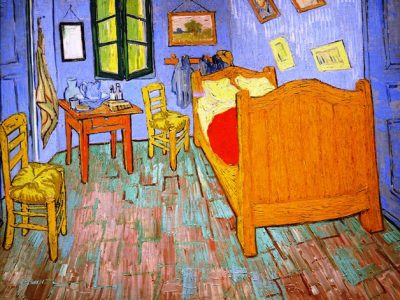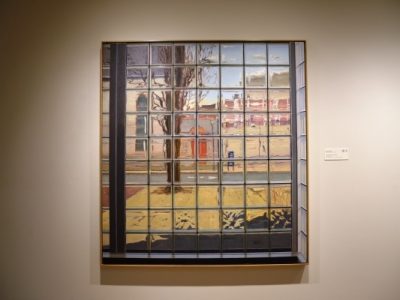Alive But Not Living
I Will Not Name Names
“Overdose deaths involving prescription opioids have quadrupled since 1999,1,2 and so have sales of these prescription drugs.3 From 1999 to 2015, more than 183,000 people have died in the U.S. from overdoses related to prescription opioids.”
https://www.cdc.gov/drugoverdose/data/overdose.html
Let me start by stating the obvious, we do not all react the same to anything; there are people, for example, who smoke one or two packs of cigarettes a day, and never get lung cancer, while there are others, who are fatally stricken by this evil disease, without any known connection to cigarettes. This is a fact that applies to many things life, including an individual’s reactions to drugs. For some, sleeping pills are literally magic! After years of battling insomnia, suddenly they find themselves enjoying peaceful and uninterrupted sleep, which leads to incredibly productive days. For others, the use of these same pills can lead to dementia and Alzheimer’s. http://www.bbc.com/news/health-29127726 http://www.medicalnewstoday.com/articles/288546.php
This is life, we can say it is random or unfair or serendipitous, but at the end of the day, too often what may be fine for one of us, is deadly for another. Likewise, I feel rather certain that the person who ever first encountered the various drugs, which are dominating our society today, thought they had discovered something wonderful that would ease pain and be a blessing, not a curse, yet what is happening in small towns, inner cities, and suburbs across our nation is a catastrophic epidemic.
“Visits to emergency departments for opioid abuse more than doubled between 2004 and 2008, and admissions to substance-abuse treatment programs increased by 400% between 1998 and 2008, with prescription painkillers being the second most prevalent type of abused drug after marijuana.
“These escalations parallel an increase by a factor of 10 in the medical use of opioids since 1990, spurred in part by aggressive marketing of OxyContin, an extended-release form of oxycodone approved in 1995, and by efforts to encourage clinicians to become more proactive in identifying and treating chronic pain. Between 1997 and 2002, sales of oxycodone and methadone nearly quadrupled. Although both per capita opioid sales and death rates from the drugs vary widely among the 50 states, studies have found a strong correlation between states with the highest drug-poisoning mortality and those with the highest opioid consumption; per capita sales are most strongly linked with methadone- and oxycodone-related mortality.3 “In some ways, this is an unintended consequence of an intent to treat pain better,” said Robert Rolfs, Utah’s state epidemiologist.” http://www.nejm.org/doi/full/10.1056/nejmp1011512
We have all seen the mug shots or worse, the obituaries, of people who have achieved enough success to make developments in their lives, notable. The most recent, a very sad photograph of an athlete, who once dominated his sport and was held in awe by much of the world, for his talent. Repeatedly, the news story starts with either notice of an individual’s death or legal trouble, and it is not until several lines later that the details of what brought this person to the state they are in emerges; sadly so often the source of their problem is drugs – be it legal, liquid, or illicit does not matter, the result is the same – death and destruction.
I first heard about the world of oxy from a young woman, who used to be a neighbor; at the time I did not know that oxy was an opioid. “Opioids are a class of drugs that include the illicit drug heroin as well as the licit prescription pain relievers oxycodone, hydrocodone, codeine, morphine, fentanyl and others.” https://www.asam.org/docs/default-source/advocacy/opioid-addiction-disease-facts-figures.pdf
She was well educated, with an advanced degree, polite, adored her pups, and filled with dreams.
We met while out walking our dogs, and exchanged the pleasantries that pet owners and then neighbors do; eventually our conversations became more in-depth and personal. This woman was not quite thirty. I learned she had been in a car accident, which had caused her to move, into her mother’s home; and now lived with chronic back pain; pain that she said had changed her life.
It was she who told me that she was taking pain medicine that made it impossible for her to work or to continue her studies. I did not quite understand. It appeared that it was not the accident that had altered her life; rather it was the pain killers, prescribed by her doctor, which had brought her life to a standstill. She was living on disability, and hoping that things would get better; but she did not have an exit plan, from a life controlled by the bottle of pills.
Also, and perhaps even more shocking, to me, she told me that when people found out she was taking oxy for her back pain, they would constantly ask her for pills, pills which she said she could sell for fifty dollars apiece, though she knew people who would pay one hundred dollars per pill. (In retrospect, it may well be that she was wondering if we were interested in buying her drugs, but at the moment, I simply thought she was sharing information – I do have that whole Pollyanna thing happening still.)
As time passed, I saw a decline in her overall wellness that left me very sad. We had spoken enough that I initially knew her to be well read, engaged, and informed about the world; but slowly I saw a decline in her state of mind and a dependency on her mother that I found terribly sad. Eventually, she no longer had either dreams or hopes that were her own; her conversation became more about her mother’s life, friends, work, and impending retirement, this bright young woman had become a shell of a person.
I did not think much about oxy after this woman moved away, and in fact did not put her and the pills together until years later, when I realized that the drug on the news was actually what this sweet soul had spoken to me about.
Sadly, what I witnessed in my neighbors life, I am now repeatedly seeing in others and it breaks my heart.
I am not unaware of how this has happened, I well remember sitting in the doctor’s office, post second surgery, his patient incredibly uncomfortable, but happy to have been discharged from the hospital for home recovery, as he began to discuss the array of painkillers he was prescribing – mostly when and how many should and could be taken – I listened intently. The pain was all but unbearable, he knew, and what had transpired was life changing, things were never going to be the same for her, but the pills were going to help.
I was not the one in pain, nor was I the one who has sustained a life changing incident, but none the less, my life too felt changed forever. As I tried to process all the information we were being told, my head spinning, I kept coming back to the names of the drugs, I was hearing.
Looking at the rods that protruded through her skin, which had been surgically attached, and trying to fathom what lay ahead, I finally interrupted; I could no longer contain myself, asking if these drugs were not highly addictive? Was he actually prescribing the drugs, which so often made the evening news? He said yes, but not apologetically, the pain was excruciating the healing process would be prolonged, and there was still another surgery to follow. I understood all of that; but what about the addiction issue?
He said these drugs and the combination of their use were the best hope to manage the pain. I then asked when the surgery’s and healing and rehabilitation were over, what percentage of his patients end up as drug addicts: He was silent for a second, obviously annoyed with me, but finally answered: The vast majority of his patients needed rehab for drug addiction, once their physical rehab is done.
I was horrified. Addiction was not an option, I thought. Too much had happened for her to end up a sad statistic; thus where the doctor said she could take one or two pills, depending on how much pain she was in, I would give her one pill and say let us wait an hour or two and see if that helps – more often than not, she survived on the smaller dose.
As the weeks passed and more surgery followed, and more time recuperating, with more drugs being sent home, I became a pill tyrant. If the prescription was for every four hours, after the first dose, I would then extend the second dose to four hours and fifteen minutes, and then twenty and thirty, until it became an hour and then two; I constantly asked the doctor for lower doses, insisting that the lower doses could be used during the day, to keep her mind alert, while in the evening a stronger dose was given, to aid in sleep, as sleep was crucial to healing. I am sure the doctor did not think too highly of me; but by the time she was ready for physical therapy to begin, she was no longer taking any opioids at all.
Shockingly, the physical therapist took great exception with her lack of use of opioids, they repeatedly insisted that she should take the pills before coming for therapy, thankfully, by then she was able to physically manage such things as getting her own medications, and chose not to use the drugs. Eventually, she completed physical rehabilitation and did not have to enter a drug rehabilitation program; for which I thank God repeatedly!
However, one of the most difficult things she faced was standing her ground with the physical therapist, regarding her refusal to use opioids. She could not help but wonder if perhaps they were right? Would her therapy have been more effective if she was drugged? Would she have been able to push herself harder and longer if she was taking opioids? Did she shortchange herself by refusing this addictive medication? That was one fight she should not have had to engage in – period.
Sadly, I know far too many people that have not fared as well as she did. In a period of less than a month, I have had several people sing the praises of opioids to me, something which I find shocking. Not only am I surprised people talk about these drugs as if they are a good movie you should see or a restaurant you should try, but that people who have not had a life changing injury, which would justify them having been introduced to these drugs, simply think that the effect of this drug is so magnificent that it should be lauded is something I cannot understand.
The individuals involved in these conversations, have also lamented how much more difficult it is to obtain these drugs, than it once was; causing me to wonder if they are having multiple, minor, surgical procedures, simply to feed a habit; a thought which I feel ashamed to have entertained, but given an abundance of empirical evidence, I also cannot dismiss.
I have been told that I do not understand pain, I beg to differ. I do not believe any of us reach middle age without our fair share of both physical and emotional aches and pains; I think it is a part of life, but the question on hand, is what price are we willing to pay for pain relief?
I sometimes feel like we are living in a world of what might have been – a world where too many people are either dying too young, or simply dropping out of life and settling for some sort of compromised existence where they either make jokes or spin foolish tales to explain away their one dimensional lives, until they reach the point where they no longer even bother to attempt to put forth a reason, for what they have become.
I see people, both young and old, who at one time were driven by their dreams and desires and now make excuses for their state of survival, with the notion of thriving expunged from their lives. Eventually the lies catch-up with them, their wonder wears off, the charm disappears, their intellectual gifts are squandered, and finally their lives are no longer about anything more than getting high.
How we got here and who is to blame are questions that I cannot answer; and in truth, I am not sure the why matters anymore. We, as a nation, are in crisis and we can no longer afford to bury our heads in the sand, and say it is not my problem. It is a problem that impacts us all, we are facing a terrifying predicament that is impacting everything from health care to crime, but more importantly we are losing lives.
Standing by and watching, as once brilliant minds become dull and unimaginative, is painful and all but unbearable. How many people do you know personally or have admired from afar that have either died a drug related death, or simply had their genius silenced because they are no longer a functioning soul?
There is a difference between trying and failing, and never becoming engaged. There is no shame in failing, but there is sorrow in never trying. If you are personally struggling with drug related issues, may I please urge you to reach out for help – there is help; recovery is not easy but it is possible. If you see a friend, neighbor, family member that was once a bright light and is now dimming – break out a flash light, right now! Addicts must want help to change, but they must also know that help is available, if they are ready to change. We need to turn up the volume on this conversation, before we face so much more than just a lost generation. There is so much more to say, but That Is All For Now –
https://www.samhsa.gov/find-help/national-helpline SAMHSA’s National Helpline, 1-800-662-HELP (4357) – these calls are confidential and they will help connect you with local resources. People engaged in this line of work are there to help, give them a chance – give yourself a chance, you deserve it!
If you or anyone you know is smoking marijuana, may I please suggest you take a look at this link – they have made ten simple to understand statements, which may enlighten whether or not you need to look for help:
http://thecanyonmalibu.com/blog/10-signs-of-marijuana-addiction/








1 comment for “From the Editor”